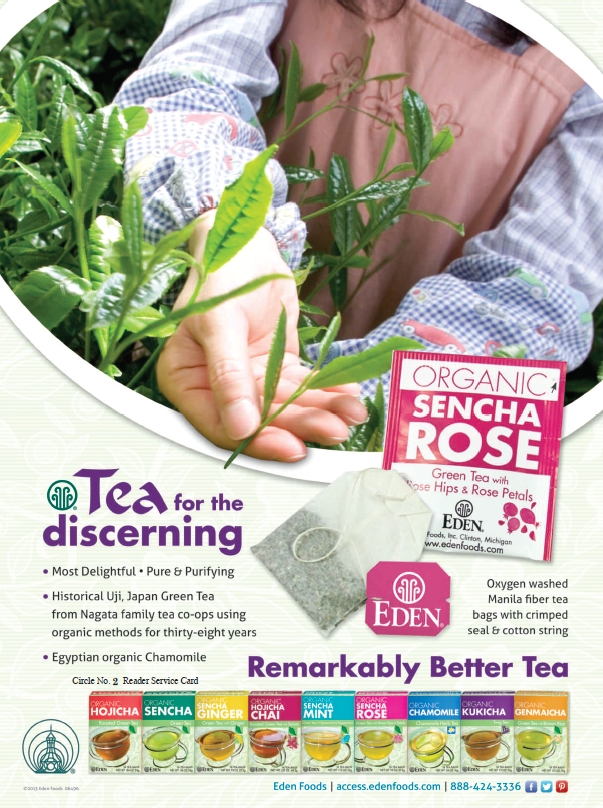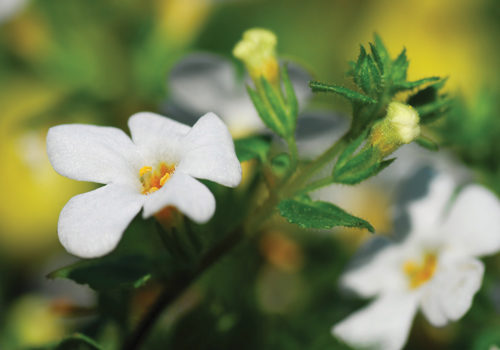Herbal medicine has been a part of the written history of traditional Chinese medicine for over 4,000 years. Eastern herbalists promote holistic balance of energy and overall wellness through herbal teas and tonics. However, Western herbalists target specific diseases or symptoms using individual herbs and spices following an evidence-based approach.
Contrasting East and West
The type of herbal medicine that herbalists practice is less about where they came from and more about which approach they prefer. For example, a friend of mine from the Unites States is an Eastern herbalist by trade. He describes his work as holistic and balanced. He builds and maintains the Three Treasures, or Three energy sources. Balancing these energy sources through Asian herbs and spices is claimed to be necessary for true health and happiness.
My friend follows a more traditional approach to Chinese medicine—an approach to the body with little emphasis on anatomical structures. Instead, he’s more concerned with the identification of functional entities that regulate digestion, breathing and aging. While health is perceived as a harmonious interaction of these entities, disease is interpreted as a disharmony between them.
In contrast, herbalists following a Western approach apply an evidence-based strategy to identify disease and implement herbal treatments. If blood testing reveals high fasting sugar, they will encourage diet and exercise but ultimately suggest an herbal extract shown in clinical research to lower blood sugar.
It is this approach to herbal medicine that has led to new, effective approaches to age-related conditions affecting so many American adults—with some surprising results. At this point, more research is needed. But, there are some promising Asian herbs and spices I’d like to present.
Turmeric Spice Eases Chronic Inflammation
No article on Asian herbs and spices would be complete without turmeric. The main constituent in turmeric is curcumin, a polyphenol antioxidant that is impressing scientists around the world with its impressive health benefits.
Modern science has found that curcumin has remarkable antioxidative, anticancer, immunomodulatory and other protective properties. Curcumin is also found to increase detoxifying enzymes and promote healthy DNA function (1–5).
Studies have tied inflammation to the overexpression of a protein molecule called nuclear factor-kappa B (NF-kappaB). This powerful protein acts like a switch to turn on genes that produce the body’s inflammatory responses. Because NF-kappaB’s expression increases in aging adults, scientists have sought ways to modulate NF-kappaB and its effects in the body.
Curcumin has been shown to exert powerful inhibitory effects on NF-kappaB activation within the body (6). In addition, curcumin inhibits the metabolism of arachidonic acid, an inflammatory fat that produces cytokines, and the activities of cyclooxygenase, lipoxygenase and cytokines (e.g., interleukins and tumor necrosis factor) (7–8).
Other clinical trials suggest roles for curcumin in helping maintain healthy bowel and joint functions. Curcumin can also help maintain normal healthy platelet function and have immunomodulatory effects by inhibiting histamine release from mast cells. Other studies show curcumin’s potential for supporting healthy brain function and offering neuroprotection (9).
Indian Ginseng Reduces Stress
Indian ginseng’s scientific name is Withania somnifera, better known as Ashwagandha. It’s classified as an adaptogen, which is an herb used for managing stress and anxiety.
Scientists have discovered that Ashwagandha counters some of the oxidative damage generated by nervous tension. Ashwagandha has been the subject of animal studies and is believed to confer improvements in well-being and a healthy outlook in humans (10, 11).
In a large clinical trial, Ashwagandha reduced levels of the stress hormone cortisol by up to 26% while maintaining healthy blood sugar levels and lipid profiles. Subjects who took the standardized Ashwagandha extract reported improvements in energy, sleep and well-being, as well as diminished fatigue (12).
Additional research suggests that Ashwagandha confers neuroprotection by supporting the regeneration of axons and dendrites, nerve cell components that support brain and nervous system function.
Bacopa monnieri Improves Memory
According to Ayurvedic medicine, Bacopa monnieri is traditionally used as a nerve tonic and brain food. Also known as Brahmi, it is commonly used today to help support memory and concentration, while easing stress and tension. Bacopa is thought to help nourish neurons while restoring depleted synaptic activity.
 Bacopa has been used for centuries in the Ayurvedic herbal tradition of India to enhance clear thinking and support memory function. Studies have shown that it supports learning and memory in humans.
Bacopa has been used for centuries in the Ayurvedic herbal tradition of India to enhance clear thinking and support memory function. Studies have shown that it supports learning and memory in humans.
In animal models, bacopa provides antioxidant protection for critical memory centers and helps to reduce the effects of stress on the brain. For both young and old, Bacopa is ideal for those wishing to enhance their memory potential.
A high-quality Bacopa product will consist of 50% bacosides A and B, compounds related to antibacterial chemicals found in plants called saponins. Bacosides help to ease inflammation in the brain and in digestive and respiratory systems.
Andrographis paniculata Treats Flu Symptoms, Study Says
Andrographis is cultivated in Southeast Asia and has been used for centuries to ease flu symptoms and speed recovery. It is mostly used by naturopathic doctors in the United States and has had mixed results. However, the variable effects and seeming ineffectiveness has more to do with low-quality products, not the herb itself.
After successfully using Andrographis for my flu symptoms, I was compelled to see if there was any clinical evidence published about the herb. I was amazed at what I found.
In one clinical trial involving 540 adults with influenza, participants were given standardized extracts of Andrographis three times daily for three to five days, while 469 individuals used conventional antiviral medications and served as the control group.
The doctors measured the severity of illness as determined by the development of complications and illness duration as determined by the number of days on sick leave.
In the Andrographis group, 30% progressed to complicated influenza compared to 70% in the control group. Likewise, those in the herbal group experienced a shorter duration of symptoms (approximately six to seven days) compared to nine to 10 days in the control group.
You can’t ask for better results. But, you have to take a high-quality product. Look for one that is made from the natural shrub and is standardized to 4% andrographolides.
Herbal Medicine is Not an Alternative Practice
Asian herbs and spices have been used with success for thousands of years. It’s not an alternative form of medicine; it’s the true traditional way to prevent and treat disease and improve health. I suggest using herbs and spices liberally in recipes, tonics and teas for daily use. Of course, when sickness occurs, consider a few of the spices mentioned here to get shoppers back to health. WF
References
1. K. Krishnaswamy, “Traditional Indian Spices and their Health Significance,” Asia Pac. J. Clin. Nutr. 17 (Suppl 1). 265–268 (2008).
2. A.S. Strimpakos and R.A. Sharma, “Curcumin: Preventive and Therapeutic Properties in Laboratory
Studies and Clinical Trials,” Antioxid. Redox Signal. 10 (3), 511–545 (2008).
3. S. Fujisawa, et al., “Cytotoxicity, ROS-Generation Activity and Radical-Scavenging Activity of Curcumin and Related Compounds,” Anticancer Res. 24 (2B), 563–569 (2004).
4. A. Shehzad, F. Wahid and Y.S. Lee, “Curcumin in Cancer Chemoprevention: Molecular Targets, Pharmacokinetics, Bioavailability, and Clinical Trials,” Arch. Pharm. (Weinheim). 343 (9), 489–499 (2010).
5. W. Bao, et al., “Curcumin Alleviates Ethanol-Induced Hepatocytes Oxidative Damage Involving Heme Oxygenase-1 Induction,” J. Ethnopharmacol. 128 (2), 549–553 (2010).
6. S. Mito, “Curcumin Ameliorates Cardiac Inflammation in Rats With Autoimmune Myocarditis,”
Biol. Pharm. Bull. 34 (7), 974–979 (2011).
7. H. Itokawa, “Recent Advances in the Investigation of Curcuminoids,”Chin. Med. 3, 11 (2008).
8. H. Zhou, C.S. Beevers, S. Huang, “The Targets of Curcumin,” Curr. Drug Targets 12 (3), 332–347 (2011).
9. G.P. Lim, “The Curry Spice Curcumin Reduces Oxidative Damage and Amyloid Pathology in an Alzheimer Transgenic Mouse,” J. Neurosci. 21 (21), 8370–8377 (2001).
10. A. Bhattacharya, S. Ghosal, S.K. Bhattacharya, “Anti-Oxidant Effect of Withania Somnifera Glycowithanolides in Chronic Footshock Stress-Induced Perturbations Of Oxidative Free Radical Scavenging Enzymes and Lipid Peroxidation in Rat Frontal Cortex and Striatum,” J. Ethnopharmacol. 74 (1), 1–6 (2001).
11. S.K. Bhattacharya, “Anxiolytic-Antidepressant Activity of Withania Somnifera Glycowithanolides: An Experimental Study,” Phytomed. 7 (6), 463–469 (2000).
12. Unpublished study, 2005. Nutrigenesis, LLC.
Dr. Michael A. Smith is senior health scientist and online personality for Life Extension (www.lef.org), one of the world’s leading organizations dedicated to extending the healthy human life span. Dr. Smith writes blog posts, creates and conducts webinars, and appears in informative videos. Currently, Dr. Smith is host of Healthy Talk (www.healtytalkmd.com) on RadioMD.com and is writing a book on the dietary supplement pyramid that is scheduled for publication March 2014. Dr. Smith was a recurring guest throughout 2012 on The Suzanne Show with Suzanne Somers on the Lifetime Network. Most recently, he contributed to Martha Stewart’s Whole Living Web site and health articles on Examiner.com.









